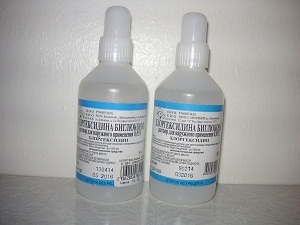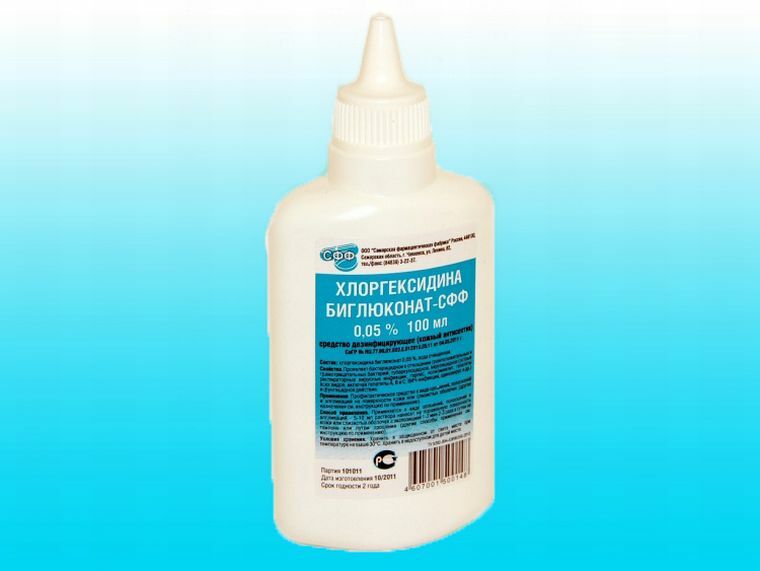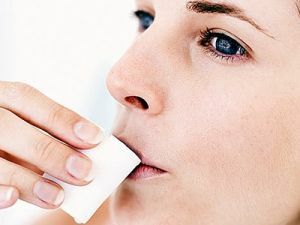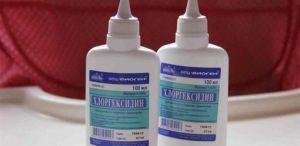 After the operation to remove a sick tooth, the dentist puts a tampon impregnated with the medicine in the hole. This ensures complete suppression of the vital activity of pathogenic microorganisms, and also promotes the rapid formation of a blood clot in the hole, which protects the tissue from further destruction.
After the operation to remove a sick tooth, the dentist puts a tampon impregnated with the medicine in the hole. This ensures complete suppression of the vital activity of pathogenic microorganisms, and also promotes the rapid formation of a blood clot in the hole, which protects the tissue from further destruction.
Some doctors recommend to rinse mouth with chlorhexidine after tooth extraction, but at the same time observe certain time frames and recommendations of specialists.
However, an hour or two later the anesthesia passes, the gingival edema develops, and even the whole cheek swells, there is unbearable pain. In this situation, a person forgets about the advice received. Starts convulsively and constantly rinse the mouth with folk remedies: salt, soda, and even medicinal antiseptics and antibiotics.
This can not be done, because incorrect oral procedures will result in the washing out of the fraction of protective white blood cells and macrophages accumulated in the dental hole, leaving damaged gum tissue and nerves naked and susceptible to pathogenic bacteria. And some medicines will burn the mucous membranes if they are diluted in high concentrations. A serious allergic collapse is also possible.
Why do many dentists recommend rinsing the mouth with chlorhexidine after removing the tooth, is it worth using, and how to do it correctly? Is this procedure always useful?
Contents
- Rinse with the purpose and with the mind
- Why Chlorhexidine, not another medicine?
- How to carry out the procedure - the professional approach
- Restrictions for the use of
- Invaluable assistant
Rinse with the purpose and with the mind
The duration of the drug decontamination drug that is used by the dentist to stop the infection in the tooth hole formed after extraction is approximately 12 to 24 hours. Then the protective properties of the antiseptic are reduced.
As a person eats, drinks, breathes daily, he receives from the outside a variety of infectious microorganisms that can cause the  suppuration of the wound a day after tooth extraction. So, rinse with chlorhexidine is necessary for the following purposes:
suppuration of the wound a day after tooth extraction. So, rinse with chlorhexidine is necessary for the following purposes:
- to prevent the development and spread of infection in the oral cavity;
- for the purpose of rapid destruction of pathogenic bacterial flora;
- for non-traumatic tissue of wound cleansing from food residues from the well;
- to anesthetize, reduce swelling of the gums;
- for accelerating cell regeneration.
Chlorhexidine is recommended after tooth extraction, damaged by caries, tartar, and other oral diseases.
It is necessary to use a medicine in the case of extraction on the background of the course of infectious diseases of the upper respiratory tract, where the pathogens are pathogenic microorganisms: in angina, bronchitis, pneumonia, tuberculosis. And also parotitis, otitis, syphilis, many other pathologies.
Why Chlorhexidine, not another drug?
An important advantage of the drug is a wide range of disinfection activity against all pathogens that attack the body weakened by the operation:
- bacteria;
- fungi;
- of the herpes virus;
- chlamydia.
Other useful properties of the medicinal product are noted:
- high stability - preservation of a protective disinfecting antiseptic film for 24 hours in any medium;
- increase in solution temperature during processing increases the activity of medicinal properties of the preparation;
- safe use for children, pregnant and lactating women, the elderly;
- anti-inflammatory properties are one of the most active and effective among similar medicines.
Rinsing with the drug causes a rapid decrease in swelling and promotes tissue repair.

How to conduct the procedure - the professional approach
Immediately after the operation, the antiseptic is not used, since the doctor has already sufficiently treated the surface of the socket and the edges of the gums.
After about a day( and in cases of infection after 12 hours), you can even start rinsing your mouth with Chlorhexidine, but with the following mandatory conditions:
- Use only a ready-made aqueous( 0.05%) solution that can be purchased at a pharmacy. To dilute independently antiseptic of high concentration it is impossible, as incorrect dilution can promote a burn of mucous.

- You can not perform the first three days of active rinsing with gurgling, you just need to take 15 ml of Chlorhexidine in your mouth and gently irrigate the area of the well, after a few minutes - a spit and a half. You can slightly bend the cheek a few times on the side of the wound, then raise your head back. Such actions will prevent the destruction of the blood clot inside the well.
- A normal active rinse is permitted after 3 to 4 days.
- The number of procedures is determined by the doctor, taking into account the difficulty of removing and hygienic condition of the oral mucosa, but under normal rinse conditions, chlorhexidine is administered no more than 4 times a day, up to 5 days.
Restrictions for the use of
The main contraindication for the use of Chloroxydin is an allergy( individual sensitivity) to the active ingredient.
In addition, these limitations should be taken into account:
- can not combine the use of Chlorhexidine with another antiseptic for rinsing, as well as folk remedies: salt, soda, herbal decoctions;
- for this period is strictly prohibited the use of alcohol;
- the use of toothpaste is permissible one hour after antiseptic treatment of the oral cavity.
In order to avoid complications for health, the use of Chlorhexidine together with the administration of other medicines prescribed by a pulmonologist, allergist, dermatologist, is possible only after consultation with these narrow-profile specialists.
It is necessary to stop the use of the drug in case of appearance of rashes, blisters, ulcers in the mouth. Perhaps these are dangerous allergies.
Invaluable helper
 The spectrum of antiseptic is wide enough - it is in demand in surgery, dentistry, gynecology, dermatology, with ENT diseases.
The spectrum of antiseptic is wide enough - it is in demand in surgery, dentistry, gynecology, dermatology, with ENT diseases.
The preparation has an effective disinfecting effect in the following cases:
- when treating burns, open wounds, frostbite;
- for rinsing with stomatitis, gingivitis, periodontitis, caries;
- with angina, pharyngitis, laryngitis, herpetic lesions of the oral mucosa;
- for the treatment of affected epithelium with gynecological, urological diseases, hemorrhoids, as well as syphilitic ulcers.
Chlorhexidine is used for the purpose of destroying pathogenic microflora for the treatment of physicians' hands, when sterilizing medical instruments and equipment, as well as the surfaces of objects, when thermal disinfection is not allowed. At home, you can wash the antiseptic parts of nebulizers.
The high effectiveness of the antiseptic is confirmed by more than 60 years of medical practice, but there are some drawbacks: the taste of the drug is bitter, and tooth enamel and dentin after using the medicine in the form of rinse liquid can darken to a gray and brown hue. However, over time, the color is restored, and the bitter aftertaste can be tolerated to avoid purulent inflammation.
The main condition is to use the medication solely for the doctor's prescription and strictly following its instructions.
